|
Lamm Lumber Company |
|
|
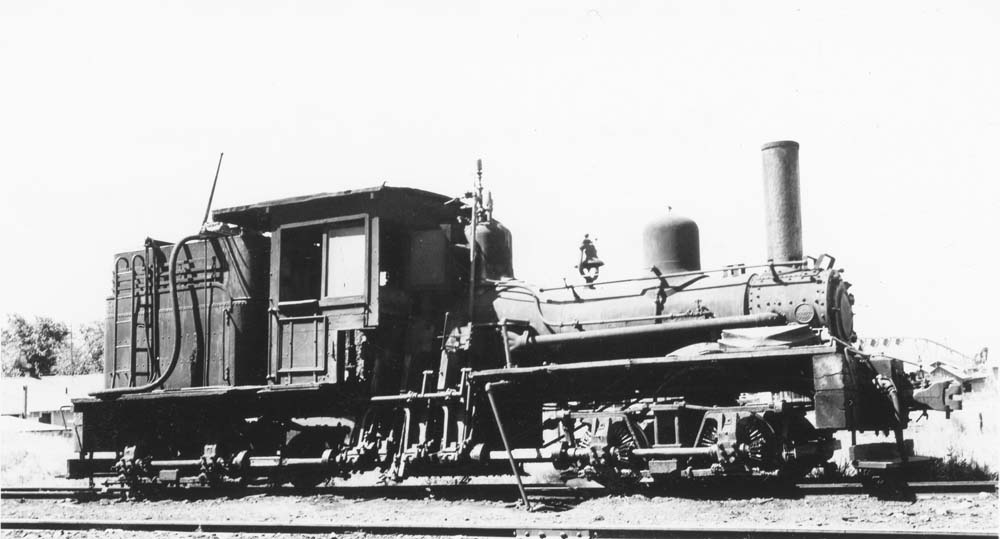 |
|
Lamm Lumber's Shay #1:1 at Modoc Point on 13 August 1937. The small Shay had already been converted to a stationary boiler by this point. R. Searle photograph.
|
|
|
|
History W.E. Lamm launched the Lamm Lumber Company in October 1914. The company's first operations in 1916 involved logging a tract of mostly pine timber on the west side of Klamath Lake, with the logs hauled to the shoreline by animals and then rafted across the lake to a sawmill Lamm leased. In later 1916 Lamm bought the partially built Pine Tree Lumber Company mill at Lelu, later renamed Modoc Point, located twenty miles north of Klamath Falls. Once completed Lamm started sawing the logs floated across the lake at that mill. Meanwhile, Lamm's contract logger Nicole Brothers had started construction on a logging railroad running from the west shore into the timber that eventually extended about three miles from the lake. In 1917 Lamm acquired a large block of timber on the Klamath Reservation located southwest of Kirk, and in 1919 Lamm shut down the logging show on the west side of the lake and started building a new railroad into the new timber from the SP mainline at Kirk. This railroad was extended several times as the loggers moved deeper into the woods. A 1926 Directory of the Lumber Industry described the company's operations as follows: "Lamm Lumber Co., Modoc Point; camp post office, Kirk; daily output, 150M; 1 side; 100 men; machine shop; commissary; electric light plant; air compressors; 1 McGiffert loader; 4 logging tractors; 5 sets big wheels; 42 horses; route supplies via Kirk; camp telephone via Klamath Falls; manager, W.E. Lamm; superintendent, Claude Houghton; purchasing agent, D.H. Crump; 11 miles s.g. track; 50 lb. rail; 1 geared locomotive; 2 sets disconnected trucks; 5 flat cars; 1 moving car; 1 tank car; 1 speeder; maximum grade, 4 per cent; maximum curvature, 10 degrees; locomotive fuel, oil; trucks and flat car supplied by the Southern Pacific railroad." The timber on the Kirk line finally ran out in 1929, at which time Lamm abandoned that railroad. However, Lamm was far from done as it was just launching what would be one of the largest single railroad logging shows in the basin, excluding of course the massive Weyerhaeuser operations. In 1928 the company bought 37,000 acres of prime timber from the Long-Bell Lumber Company, which would require a forty mile long railroad built east from a connection with the Southern Pacific at Chinchalo. Lamm contracted the first part of the construction job to F. Hill Hunter's Sawmill Engineering & Construction Company, which included trying to build a fill across the Klamath Marsh in winter time conditions. The Hunter crews after much trial and error and difficulty finally got a diesel powered clamshell shovel floated on a barge, which gradually dug the frozen muck out of the marsh bottom and dumped it to build a new roadbed six feet above the marsh surface. Once the fill was complete the job of bulding track and ballasting began, which proved to be a difficulat and very dangerous job as the tracks even with a lot of wood bracing sank as much as 18 inches underneath the locomotive in most places. The engine looked "like the Leaning Tower of Pisa" most of the time while on the fill according to a writer for The Timberman who witnessed parts of the work. However, the job eventually got done, and Lamm settled down to hauling logs out of the tract to the SP for delivery to the Modoc Point mill. Two other logging railroads, Kesterson Lumber and Pelican Bay Lumber, both built logging railroads of their own off of the Lamm railroad; the Kesterson railroad caused Lamm some troubles, as it had counted on a contract to haul their logs to help finance the enormous cost of the new logging railroad, but Kesterson only shipped a small fraction of the required board feet before defaulting on the agreement. Lamm later brought suit against Kesterson, but eventually settled for some used logging equipment and Kesterson's idled railroad. Long-Bell Lumber also loaded logs onto railcars at a couple points on the Lamm railroad, but did not otherwise build any lines of their own. Lamm Lumber paid dearly for the choice to run the railroad across the Marsh as the roadbed continually sank into the muck and required constant rock dumping and jacking and other maintenance to keep the line passable. Joseph H. Pierre in his fine book Whan Timber Stood Tall about his life working mostly in the timber industry wrote about a summer he spent during the depths of the Depression working for Lamm. The company was one of the few offering employment in the industry at the time, and Pierre got his foot in the door because of a friend of his who knew the Lamm woods superintendant. Pierre spent three weeks on the Lamm section gang, mostly working on the marsh trackage and correcting sunk kinks before a spot opened up for him in the woods. Pierre related one other interesting story about his time with the company, after several weeks working on the logging side the company promoted him to the cat hostler position, which spent every night at the landing servicing the Caterpillar tractors and McGiffert loader. Among the tasks was draining the water out of the cats each night and then refilling them the next morning, and then starting the cats before the loggers arrived for work. Firing up the tractors was accomplished by manually spinning the flywheels with a starting bar, but the tractors had accumulated so much dust in the starting mechanisms that getting them going was very difficult to impossible on most mornings, and the mechanic refused to overhaul the cats. On his second night on that job Pierre came up with a solution in which he would park the five cats- four of them Caterpillar "Sixty" tractors and one "Thirty" that the crews referred to as the kitten- at the top of a nearby rise, where he drained them. When the time came to get them started he would coast them off the hill and pop the clutch as they rolled towards the landing, he would then bring them to a stop as he reached the landing where he would immediately grab the hose and refill the radiators. One night the injector on the loader would not work, which forced Pierre to walk the seven miles back to camp to wake up a mechanic, who after a lot of effort finally got the injector working. The mechanic then volunteered to stay and help Pierre finish up the remainings tasks, but Pierre talked him into going back to camp to get breakfast because, as he wrote, "I had to get all those cats started, and I sured didn't want him to see how I did it." Save for some time off during the worst of the Depression the Lamm operation operated steadily until 1943, when the timber ran out and Lamm closed and scrapped both its railroad and sawmill. Perhaps the largest remaining legacies of the operation are remnants of the sawmill at Modoc Point and the subgrade of Highway 676, Silver Lake Road, across the Marsh. |
|
|
Maps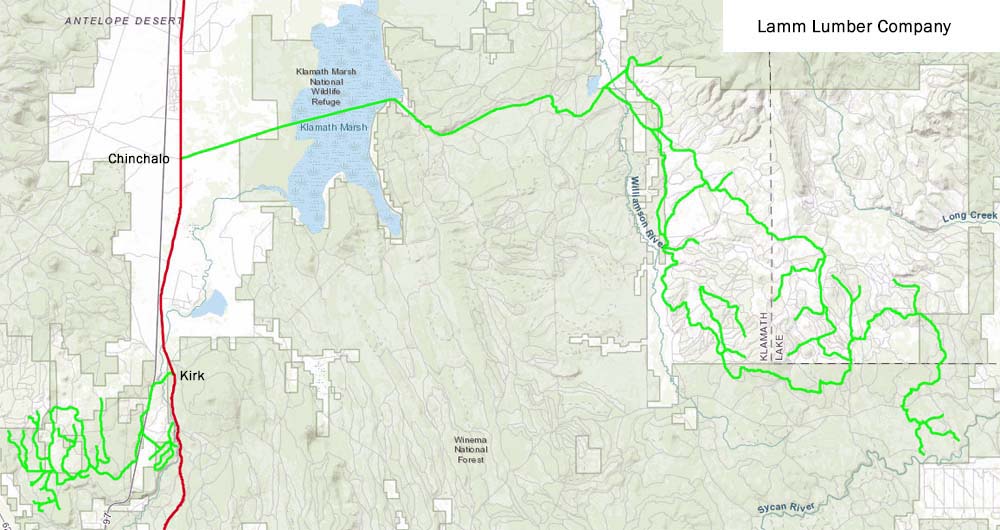 |
|
Map of the Lamm Lumber Company logging railroad system.
|
|
|
|
Locomotive Roster 1:1- Lima 2-truck Shay, c/n 798, Built 1903. Cylinders 8x12, Drivers 26.5", Tractive Effort 14,950 lbs., Weight 32 tons. Built as Clark Creek Logging Company #2, Kelso, WA; to Lamm Lumber #1. At least one source has it renumbered to Lamm #2. Used as a stationary boiler at Modoc Point mill for many years. Scrapped 1943. 1:2- Lima 2-truck Shay, c/n 2722, Built 1913. Cylinder 10x12, Drivers 29.5", Tractive Effort 16,900 lbs., Weight 42 tons. Built new for Pelican Bay Lumber Company #2, Klamath Falls, OR; to Lamm Lumber Company #1:2. Scrapped 1951. 2- Heisler 2-truck, c/n 1254, Built 1912. Weight 62 tons. Built at Horseshoe Lumber Company #7, River Falls, AL; to Jordon River Lumber Company, Kiln, MS; to Edward Hines Yellow Pine Trustees, Kiln/Lumberton, MS; to Northwestern Pacific Railroad #255, Sherwood, CA; Leased to Northwestern Redwood Company; to Shaw-Bertram Lumber #2, Kirk, OR; to Lamm Lumber Company #2, Modoc Point, OR; Wrecked and scrapped 1931. 3- Baldwin 2-8-2, c/n 61306, Built 1930. Cyliners 19x24, Drivers 44", Tractive Effort 31,900 lbs., Weight 80 tons. Purchased new; to California Western Railroad #44, Fort Bragg, CA, 1944. Scrapped 1952. 4- Alco/Cooke 2-6-2, c/n 62515, Built 1920. Drivers 48", Tractive Effort 29,900 lbs., Weight 72 tons. Built new for Pelican Bay Lumber Company #3, Klamath Falls, OR; to Lamm Lumber Company #4; to Ventura County Railway #3, Ventura, CA, 1944. 4:2- Lima 4-6-0, c/n 1034, Built 1906. Cyliners 7x24; Drivers 48"; Tractive Effort 22,100 lbs., Weight 53 tons. Built as Horseshoe Lumber Company #4, River Falls, AL; to Forest Lumber Company #4, Pine Ridge, OR; to Lamm Lumber Company #4. Scrapped June 1947. |
|
|
|
Photos |
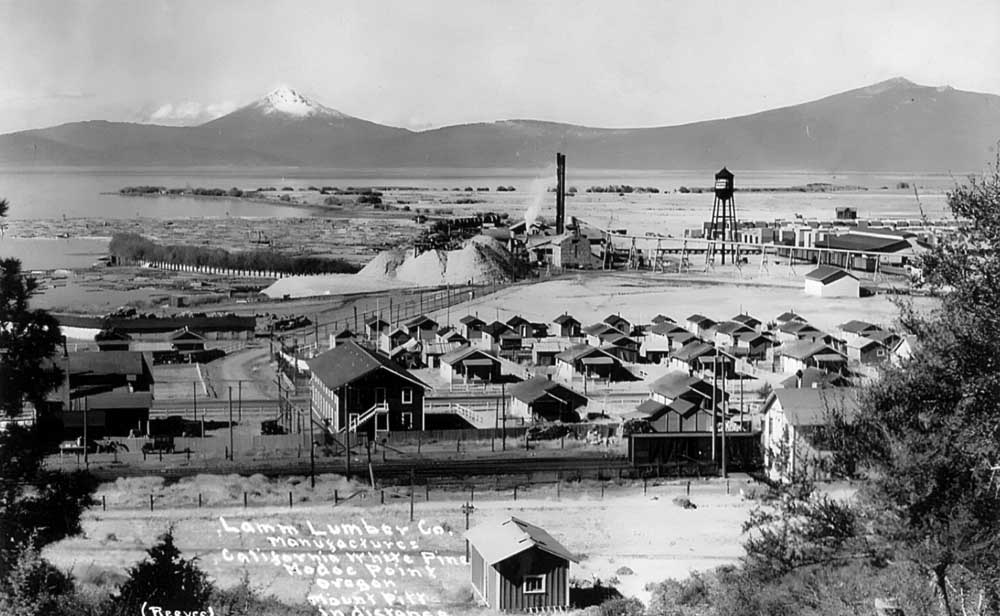 |
|
An overview of the Lamm Lumber mill at Modoc Point.
|
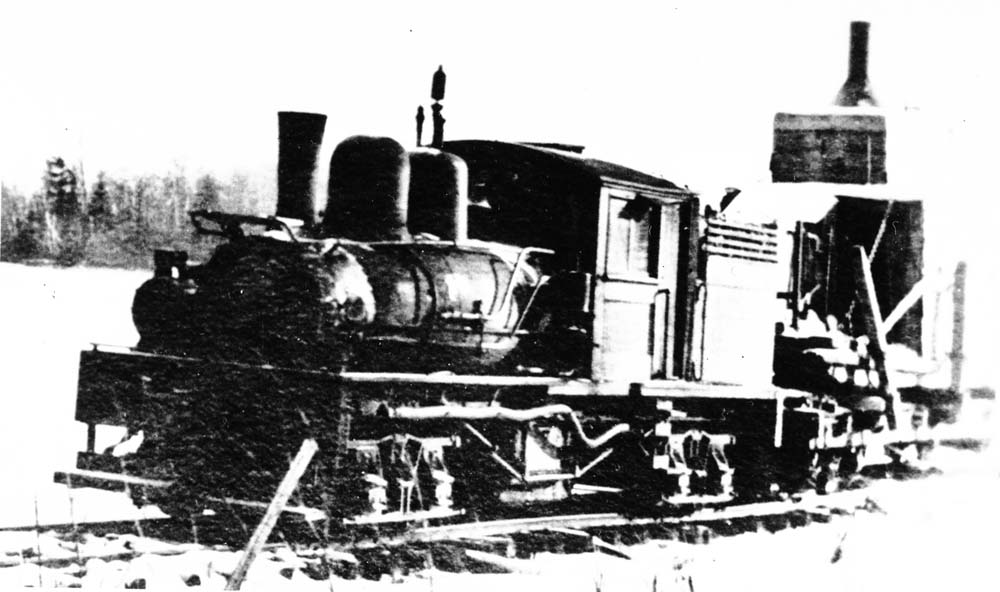 |
|
Lamm Lumber second #1. John T. Labbe Collection of Logging and Railroad Photographs, 1892-2010, Washington State Archives,
Digital Archives, http://www.digitalarchives.wa.gov.
|
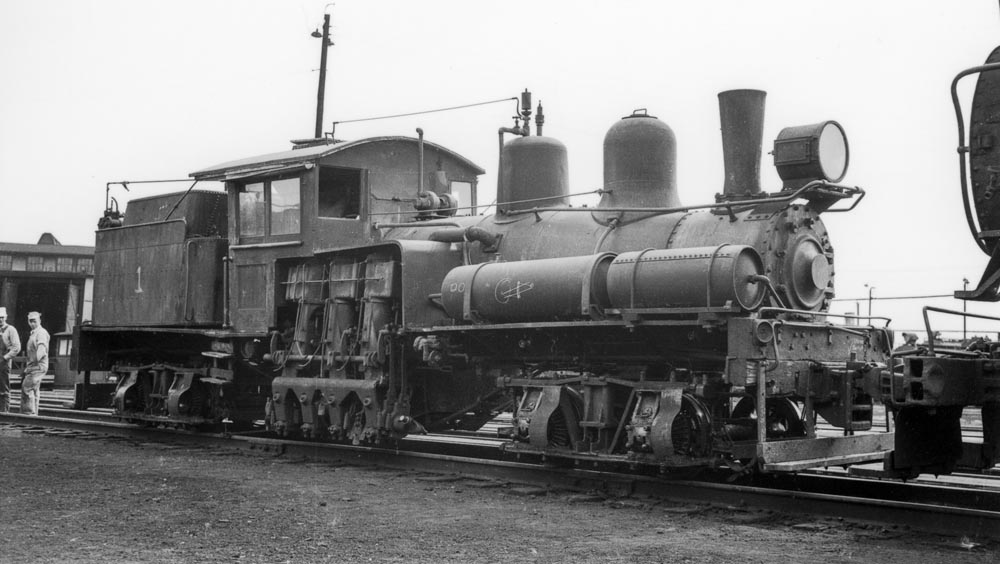 |
|
Lamm Lumber second #1 in Eugene, Oregon, on 26 April 1949. Bert Ward photo, Donald P. Hensley Jr./Taplines.net collection.
|
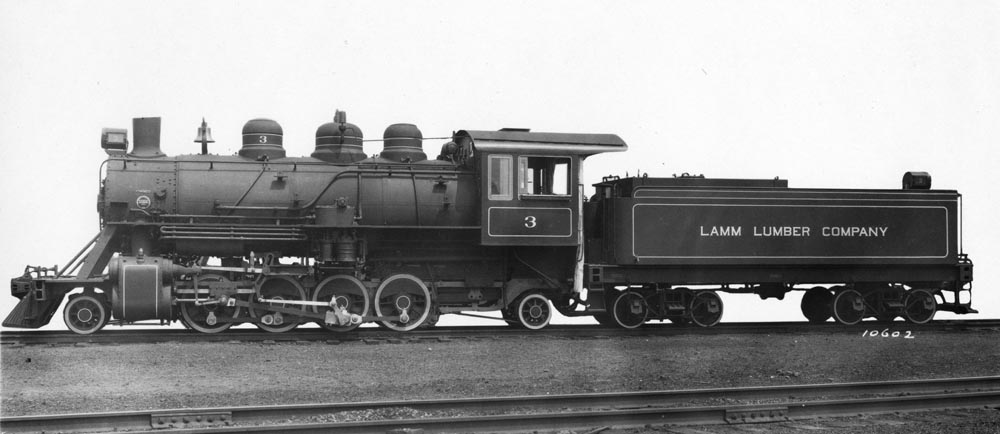 |
|
Baldwin builder's photo of the brand new Lamm Lumber #3, purchased specifically for use on the new Chinchalo line. Jerry Lamper collection.
|
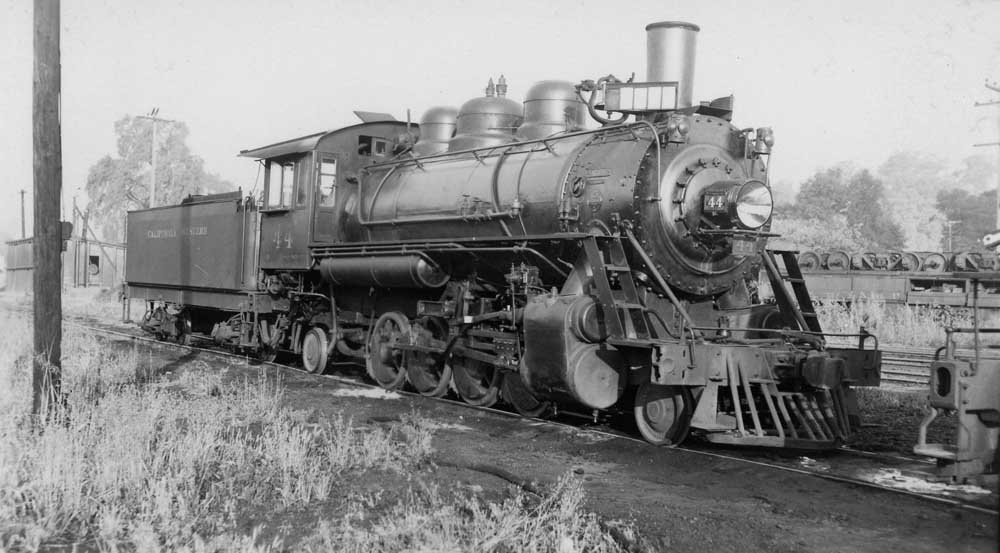 |
|
California Western Railroad #44, the former Lamm Lumber #3, in Willits, California, on 22 June 1948. Ralph H. Payne photo.
|
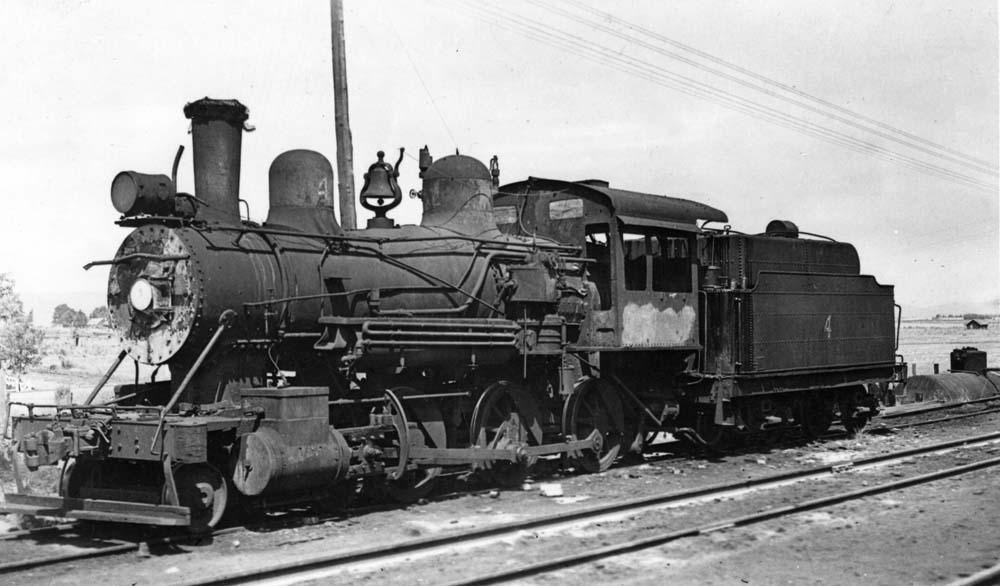 |
|
Lamm Lumber #4:2 sitting derelict at Modoc Point after operations ended. Ivan W. Saunders photo.
|
|
|